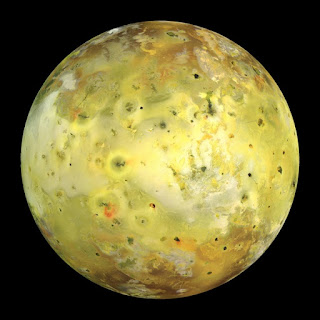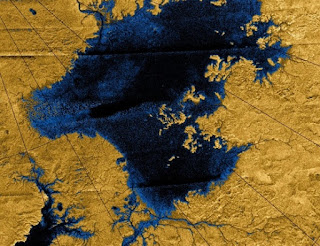Moons are natural satalites that revolves round a celestial body, a good example is our Moon. But not every natural satalites in our solar system is quite unique as ours. Here are my 7 bizarre moons in our solar system in no particular order.
Io has volcanoes all over its surface. They mostly leave sulfur on the surface, and sulfur can take on a range of colors, depending on its history as it cools. Thus, Io is pockmarked and colorful.
Europa has the smoothest surface of any solid object in the Solar System, with streaks that suggest plate tectonics occurring. There are geysers too. Its atmosphere is thin, but interesting because it consists mostly of oxygen. It probably has a surface layer of water around 100 kilometres thick, which is frozen on the surface but probably liquid within. It is thus a good candidate to harbor life.
Triton is the only large moon that orbits in the opposite angular direction to its planet’s rotation. Because of tidal drag, that means Triton will come close enough to Neptune to break up, whereupon it will form a system of rings far more massive than Saturn’s, in around 3.5 billion years. It has geysers too, but they are of liquid nitrogen rather than water.
Mimas is the smallest body in the Solar System that has been driven into a rounded shape by its own gravitation, at 396 kilometres diameter. However, its current rotation does not precisely fit its present shape. It is distinctly recognizable by its crater Herschel.
Iapetus has two odd features.
- It is much darker on one hemisphere than the other. This picture shows some of its dark side on the right:
- It has a ridge that runs all around its equator. (Note the bump on the right limb above, too.)








